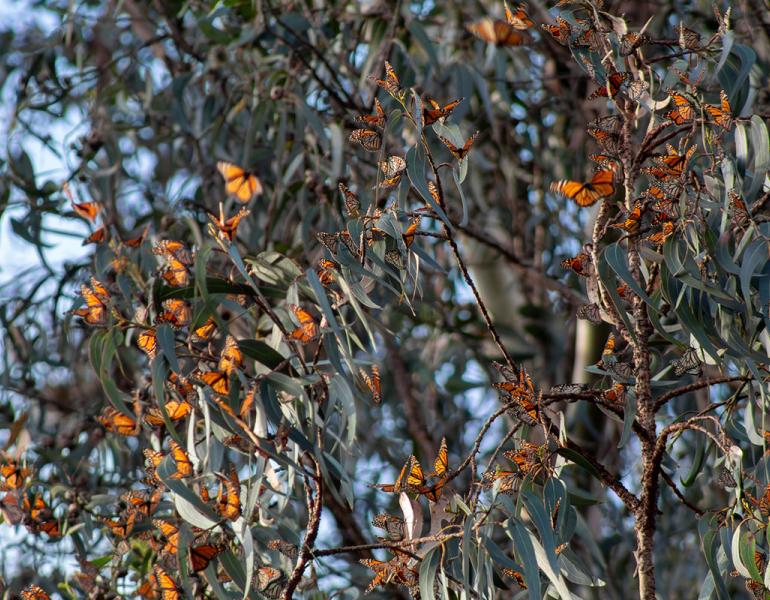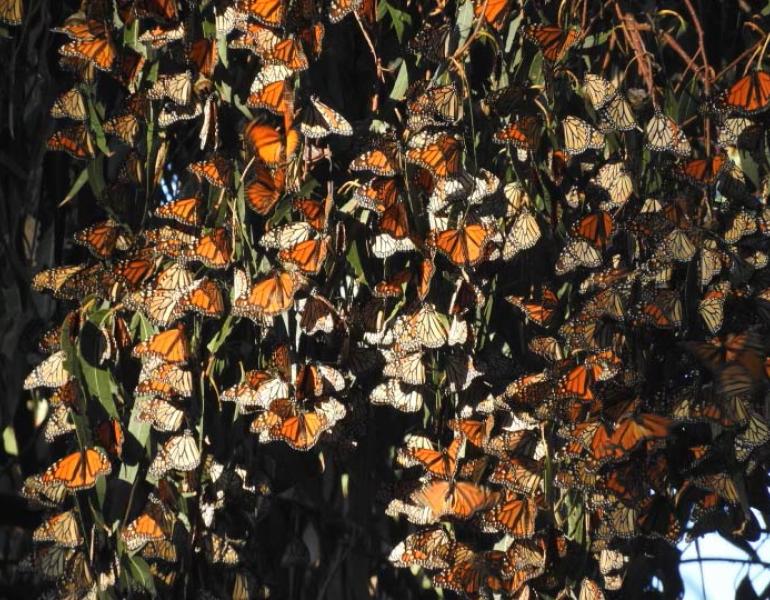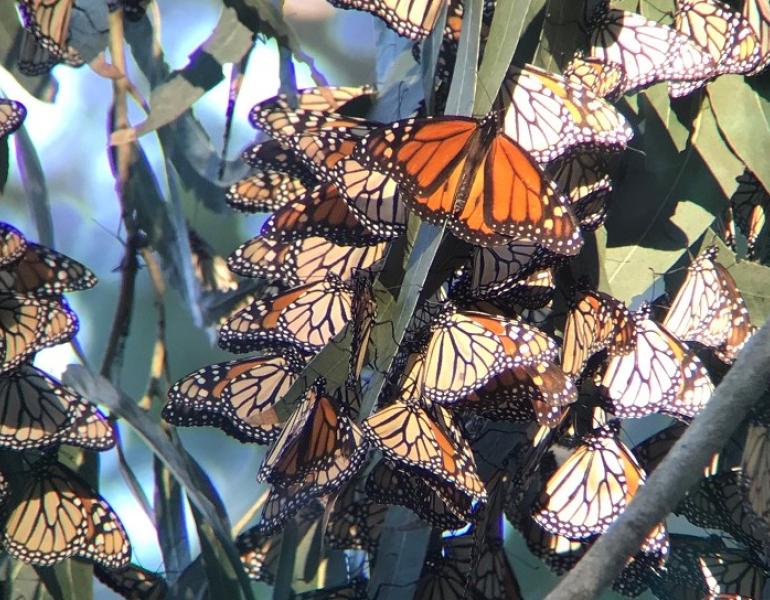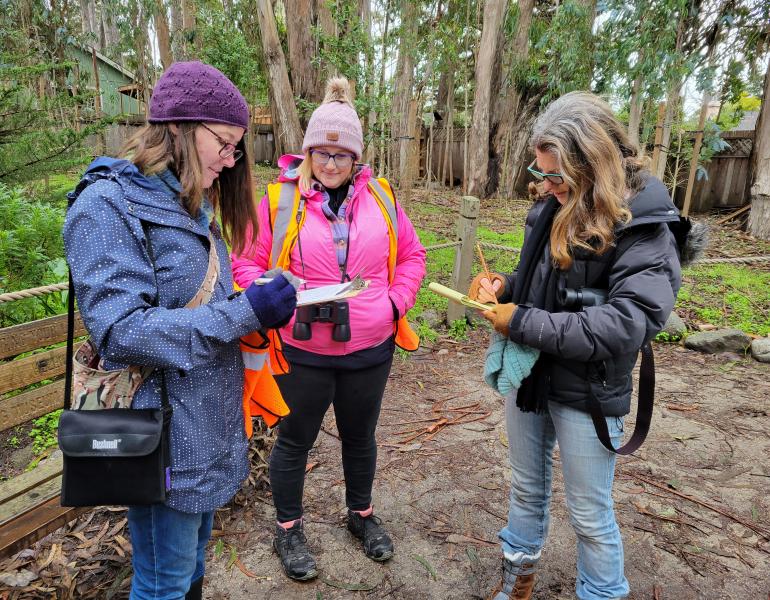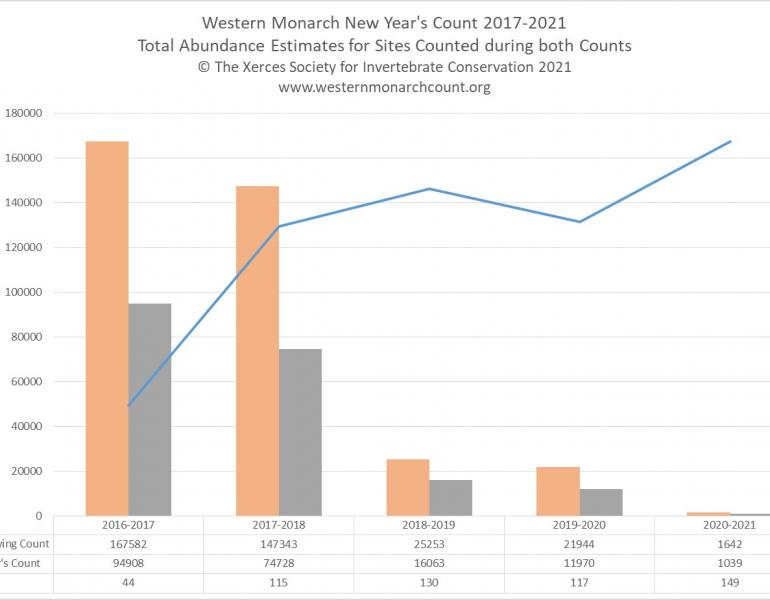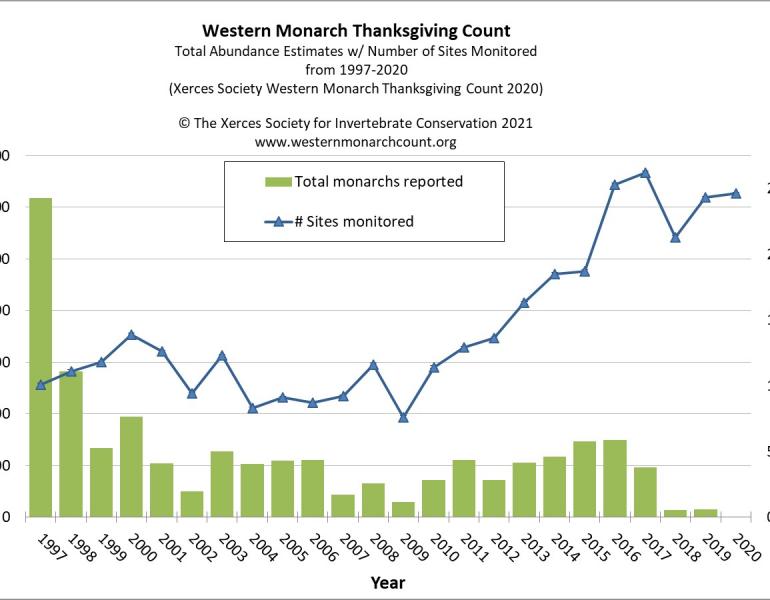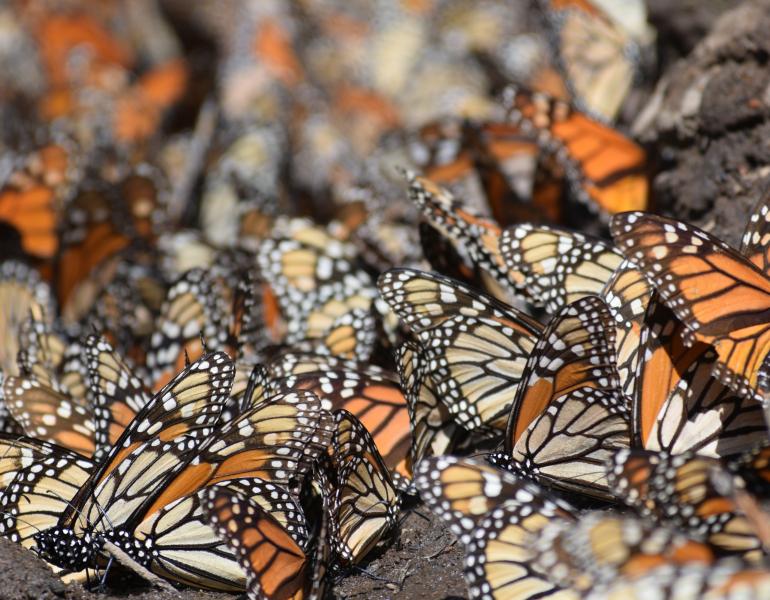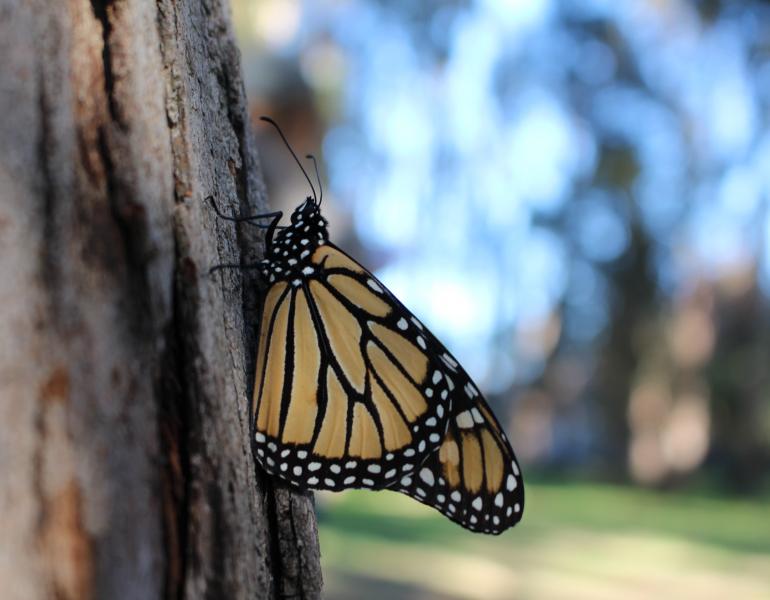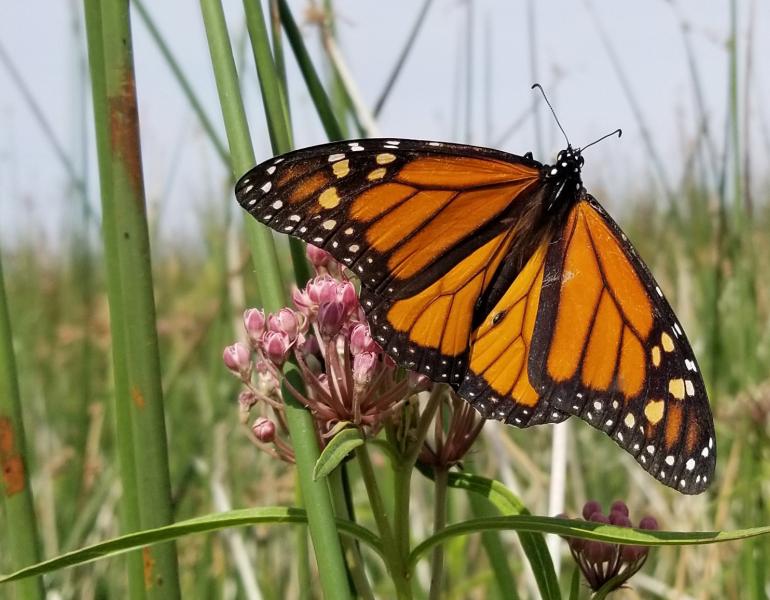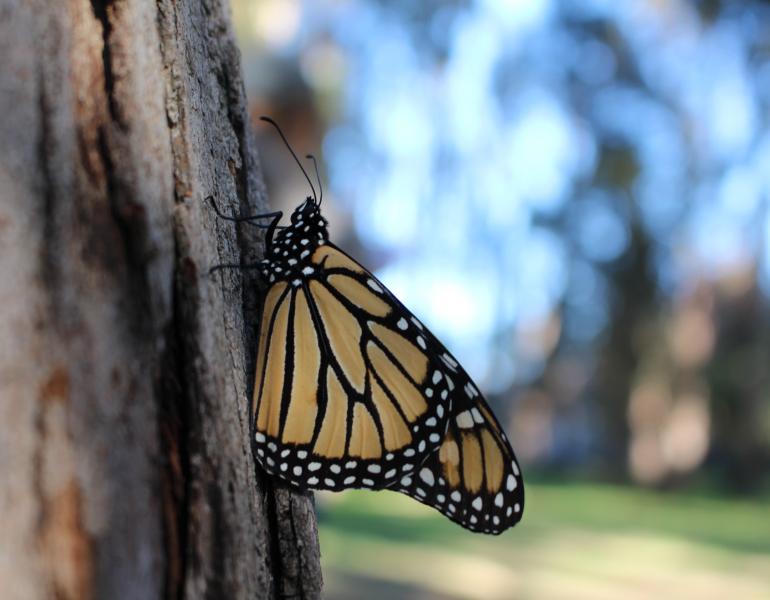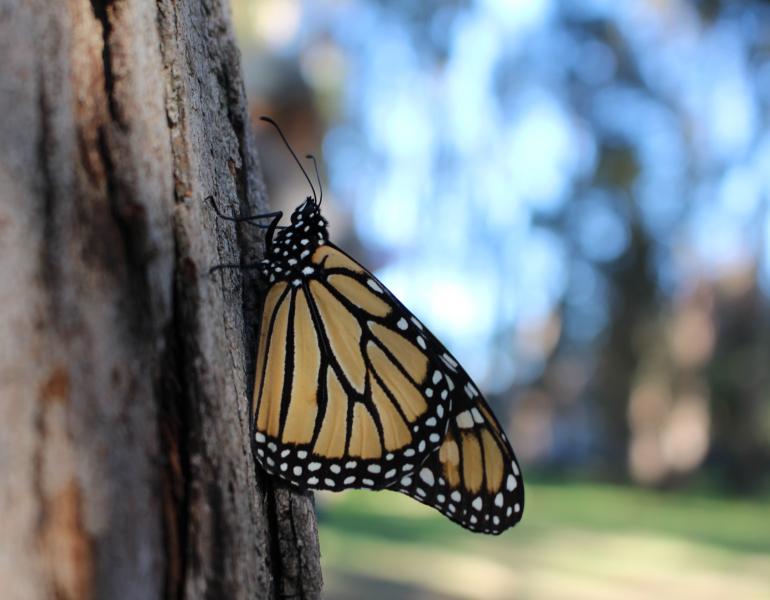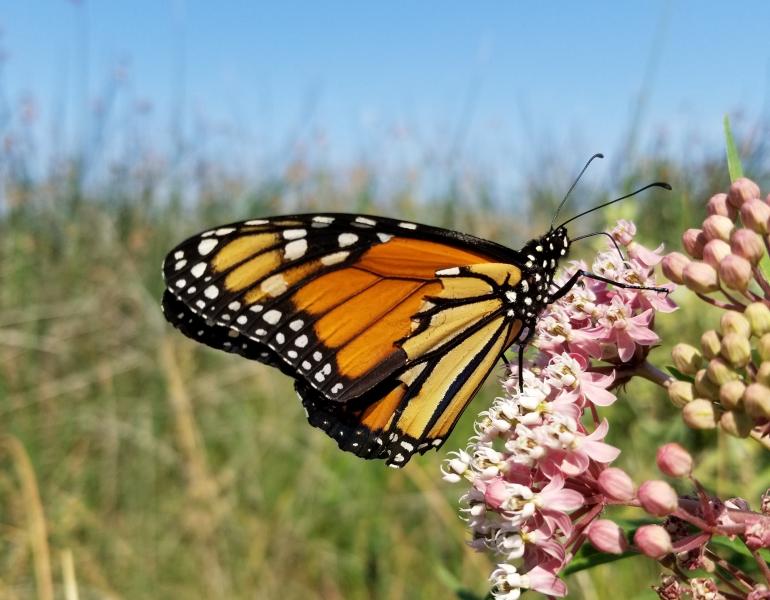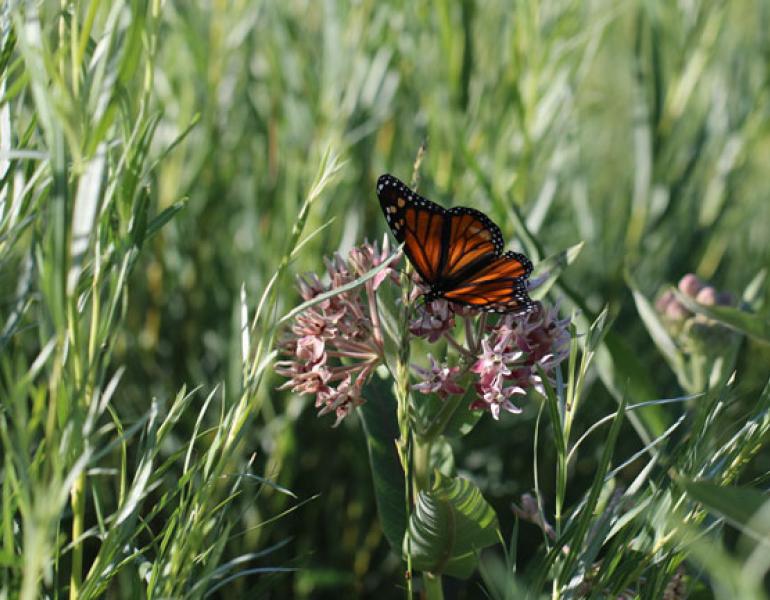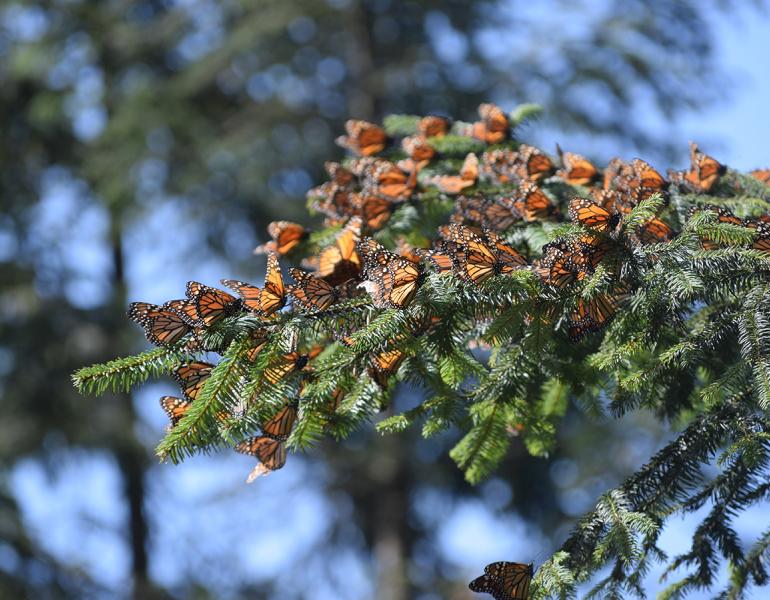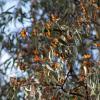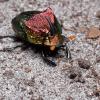Migratory western monarchs underwent a 28% seasonal decrease this winter before dispersing from overwintering sites.
Western Monarch Count
Western Monarch Count Tallies 233,394 Butterflies
The overwintering population of western monarchs remains at approximately 5% of its size in the 1980s.
New Year’s Count of Western Monarchs Reveals High Seasonal Decrease Following Severe Winter Storms
The Xerces Society’s Western Monarch New Years Count data reveals a 58% seasonal decrease in the overwintering western monarch population. While numbers are expected to decrease between Thanksgiving and New Years for various reasons, this decrease is higher than trends over the last six years.
New Year’s Count of Western Monarchs Tracks Population Decline During Overwintering Season
The Western Monarch New Year’s Count serves as a follow-up to the annual Thanksgiving Count to help scientists better understand how the western monarch population changes throughout the overwintering season. Monitoring revealed an average decrease of 38% between the Thanksgiving and New Year’s Counts, within the range of a 36-49% seasonal decline observed over the previous six winters. The overall western monarch population remains higher than in previous years.
Western Monarch Thanksgiving Count tallies nearly 250,000 butterflies
The Xerces Society’s Western Monarch Thanksgiving Count celebrates its 25th year of community science with a surprising and remarkable outcome: 247,237 monarch butterflies observed across western overwintering sites, an over 100-fold increase from last year.
The Bounciness of Butterflies
The western monarch migration is having a better year, but this isn’t population recovery.
Fifth Annual Western Monarch New Year’s Count Confirms Continued Decline in Western Monarch Population
Now in its fifth year, the New Year’s Count has given us a better understanding of: 1) how monarch numbers may decline at overwintering sites as the winter progresses; 2) how monarchs move between and within sites; 3) when they leave sites; and 4) the level of mortality that adult monarchs may be experiencing during the winter.
Remembering Bill Shepard, a Great Friend of Butterflies
Bill Shepard dedicated his life to helping butterflies. He participated in many annual counts across California as well as the Western monarch Thanksgiving Count. An educator by profession, he also fostered future generations of butterfly enthusiasts.
Western Monarch Population Closer to Extinction as the Wait Continues for Monarchs’ Protection Under the Endangered Species Act
During the 24th Western Monarch Thanksgiving Count, nearly 100 volunteers carefully surveyed groves of trees on the California and Northern Baja coast for monarch butterflies. Despite the challenges of conducting field work during a pandemic, volunteers surveyed 246 sites, three more than last year. Unfortunately, to the surprise and dismay of many, only 1,914 monarchs were counted at all the sites. This is a shocking 99.9% decline since the 1980s.
Monarch Population in California Spirals to Another Record Low
Early count numbers from Xerces’ Western Monarch Thanksgiving Count suggest that the western migratory population is headed for an all-time low. If early data reflects monitoring at the rest of the sites, we may see fewer than 10,000 monarchs overwintering in California this year.
Monarchs Overwintering in Mexico Down 53%
This decline makes it clear that monarchs are not recovering and still urgently need Endangered Species Act protection in the United States and extraordinary conservation efforts throughout North America. Learn how to help here.
New Year’s Count Finds Continued Decline of Monarchs Overwintering in California
Monitoring revealed an average decrease of 46% between the Thanksgiving and New Year’s counts. While the decline is alarming, the silver lining is that this data has provided a concrete list of priority sites to target for conservation efforts.
Thanksgiving Count Shows Western Monarchs Need Our Help More than Ever
The western monarch population remains at a critical level. With some luck and a lot of hard work, we have hope that we can save this incredible migration.
Monarch and Pollinator Habitat Kits Designed to Support Imperiled Western Monarchs
These specially designed kits, geared towards large-scale projects, incorporate native milkweeds, nectar plants, and climate considerations.
Western Monarchs: Notes from the Field
Staff from the Xerces Society and our partners have been keeping close eyes on the imperiled western monarch population at study sites in California, Nevada, Oregon, Washington, and Idaho as part of a multi-year collaborative research project.
Photo Essay: Trinational Monarch Meeting and Exploring Mexico’s Monarch Overwintering Sites
Xerces Society Endangered Species Conservation Biologist and Western Monarch Lead Emma Pelton recounts her recent experience in Mexico with this photo essay.
New Year’s Count of Western Monarchs Confirms Decline, Trends Seen in Previous Years
Overall, the count data revealed an average decrease of 38% between the Thanksgiving and New Year’s counts.
Record Low Number of Overwintering Monarch Butterflies in California—They Need Your Help!
We urge you to join us and our colleagues in the western monarch science and conservation community in taking meaningful, swift action to help save western monarchs.
Early Thanksgiving Counts Show a Critically Low Monarch Population in California
The California overwintering population has been reduced to less than 0.5% of its historical size, and has declined by 86% compared to 2017.
Western Monarch Numbers Expected to Be Low this Year
What can you do to help the monarch? Protect habitat, avoid pesticide use, plant gardens, and contribute data to Xerces-led community science efforts.
Very Low Numbers of Monarchs Overwintering in California may Reflect an Unusual Fall
Unusual fall weather may have contributed to the lowest overwintering western monarch population recorded since 2012.
2017 Monarch Numbers Are Down, Lengthening a Worrying Trend
A documented 74% decline in the California overwintering population since the late 1990s mirrors the steep decline, estimated at 80–90%, of the number of butterflies in Michoacán over the same period.

